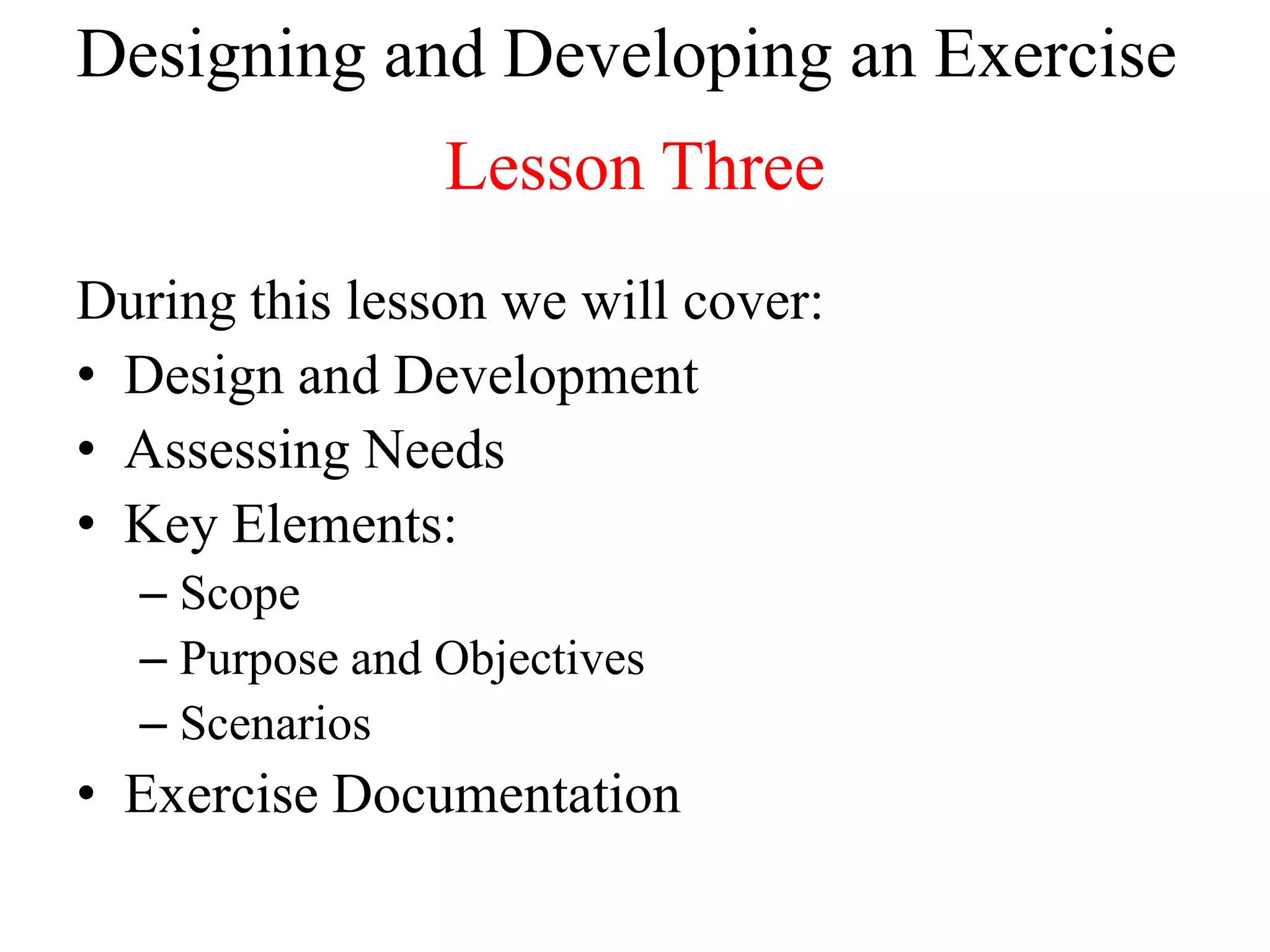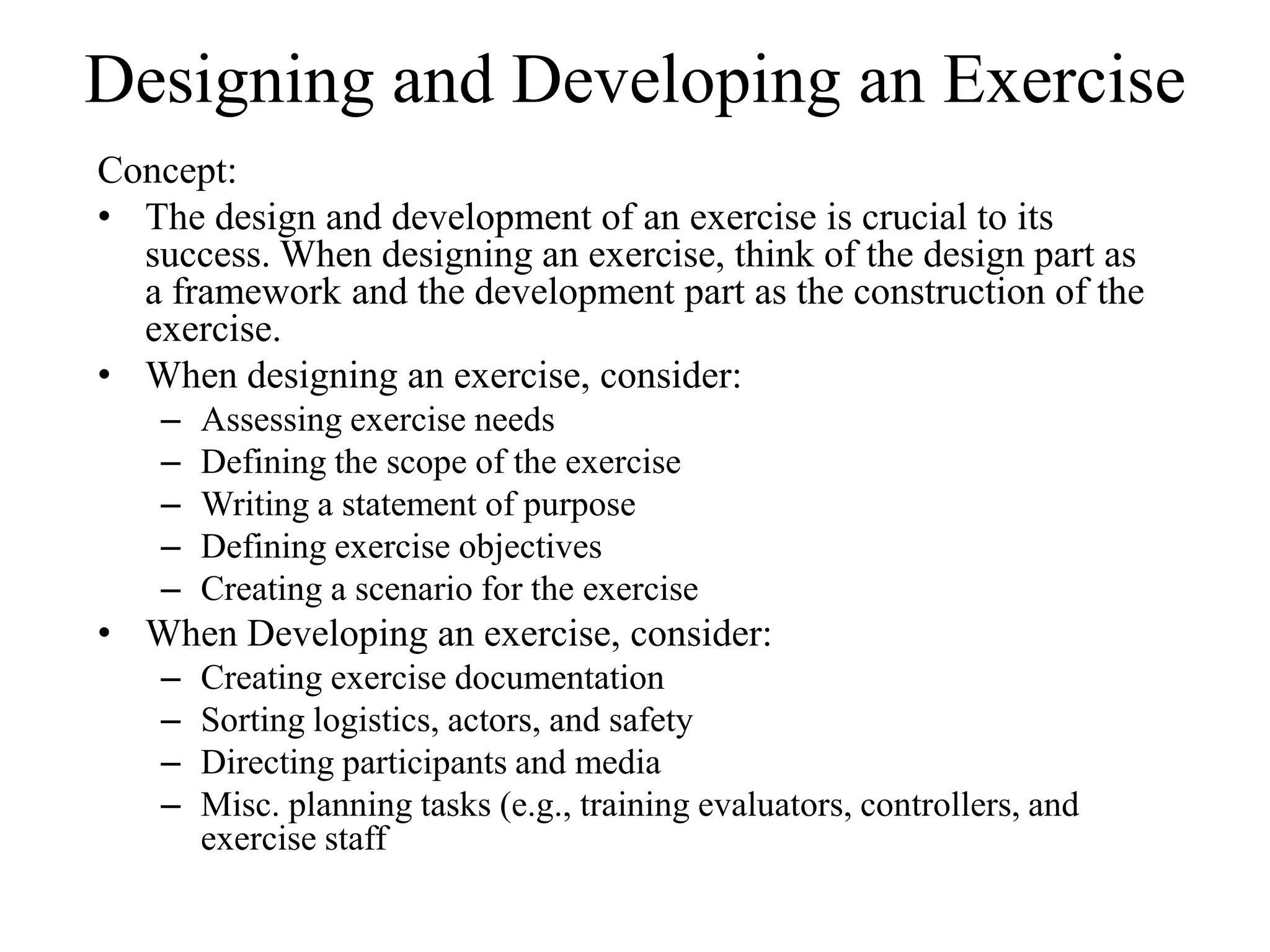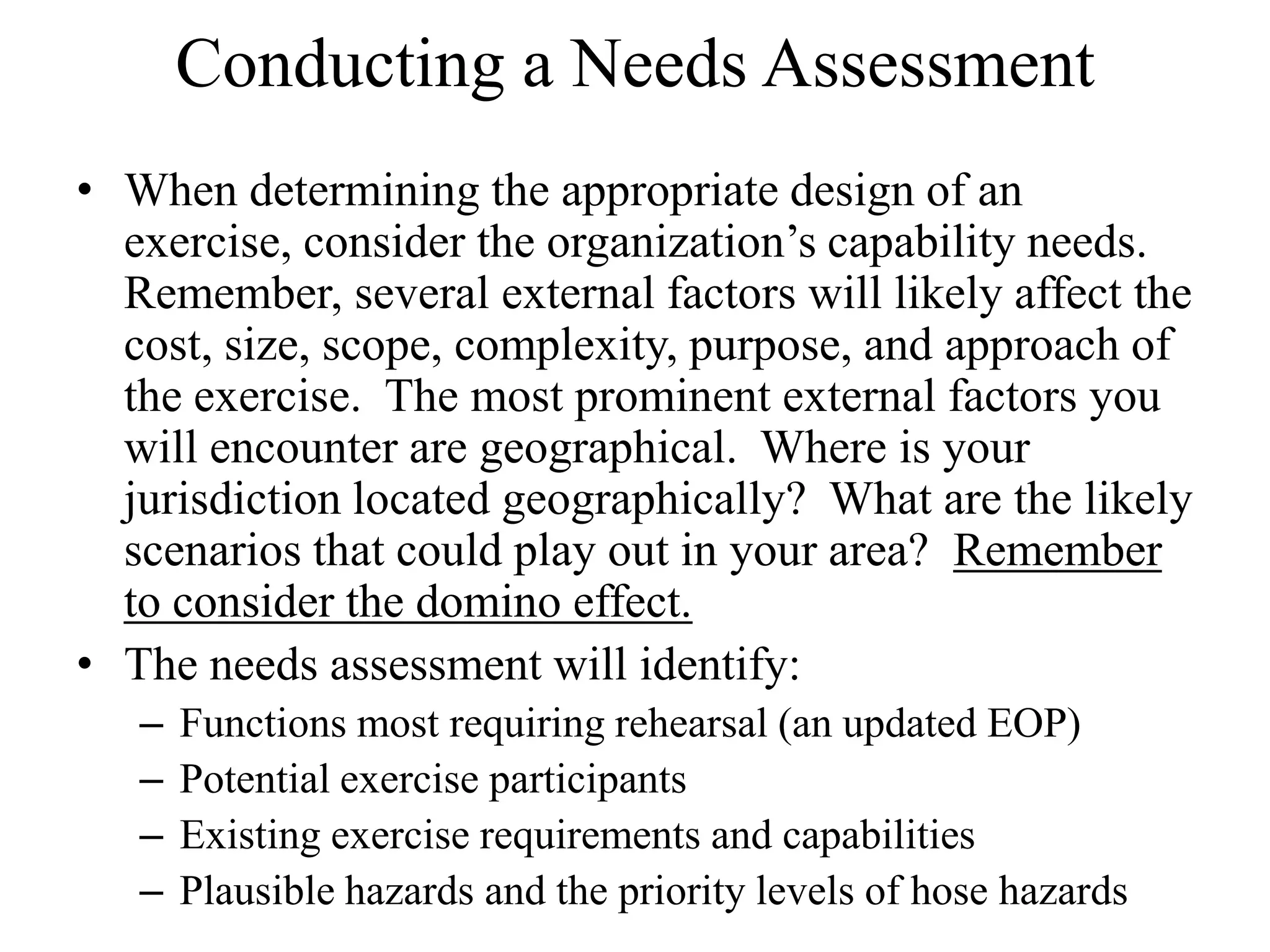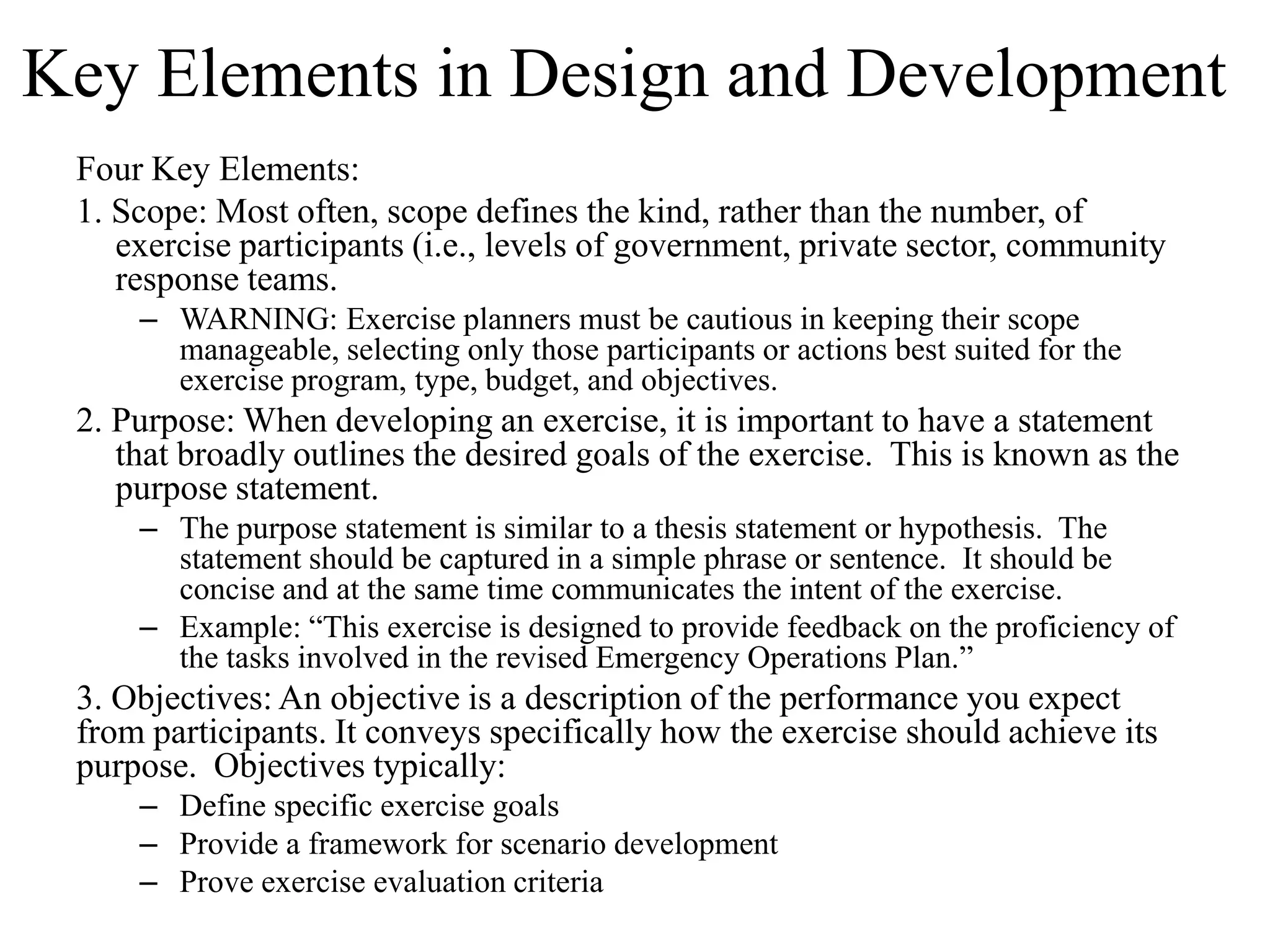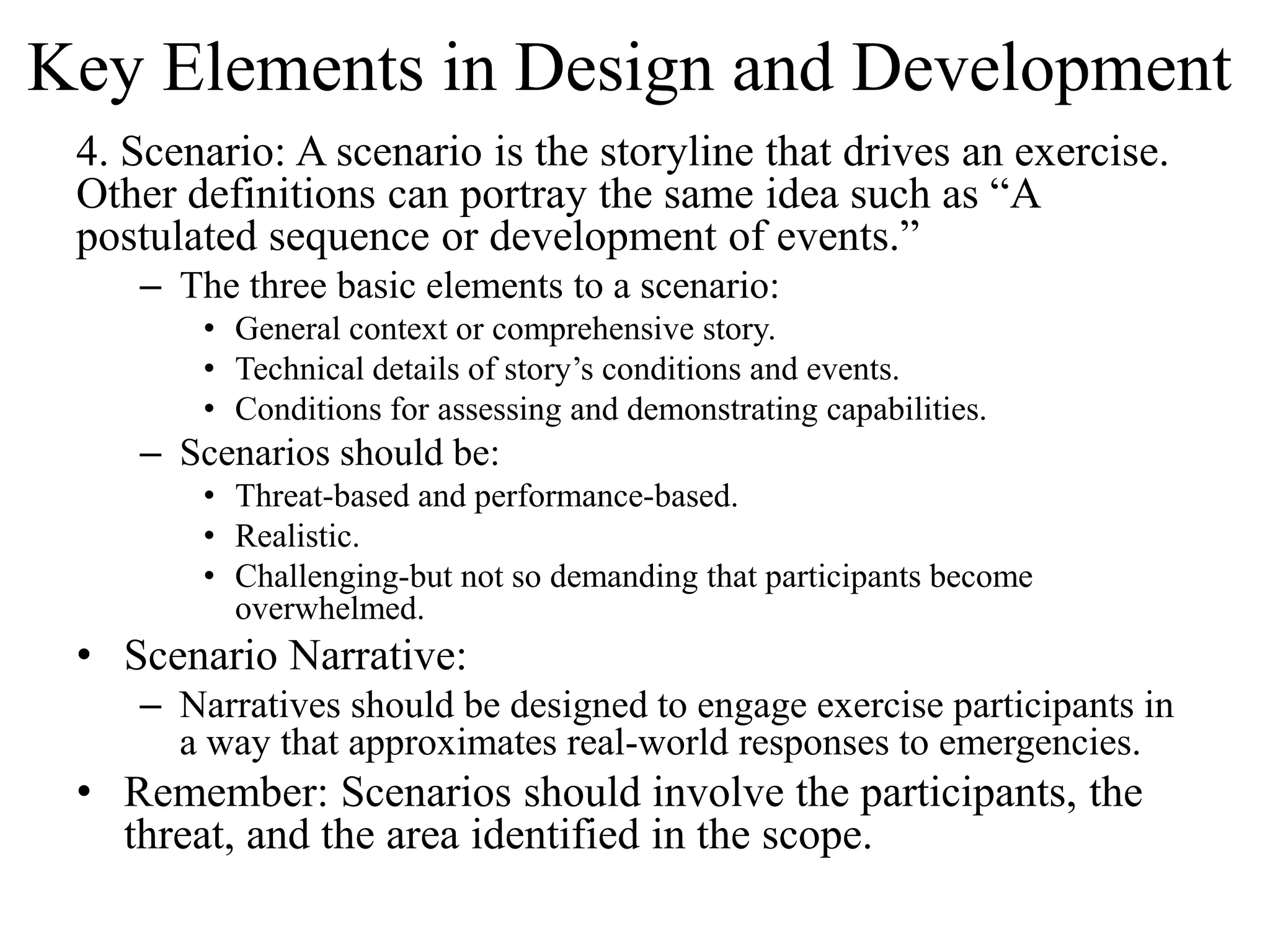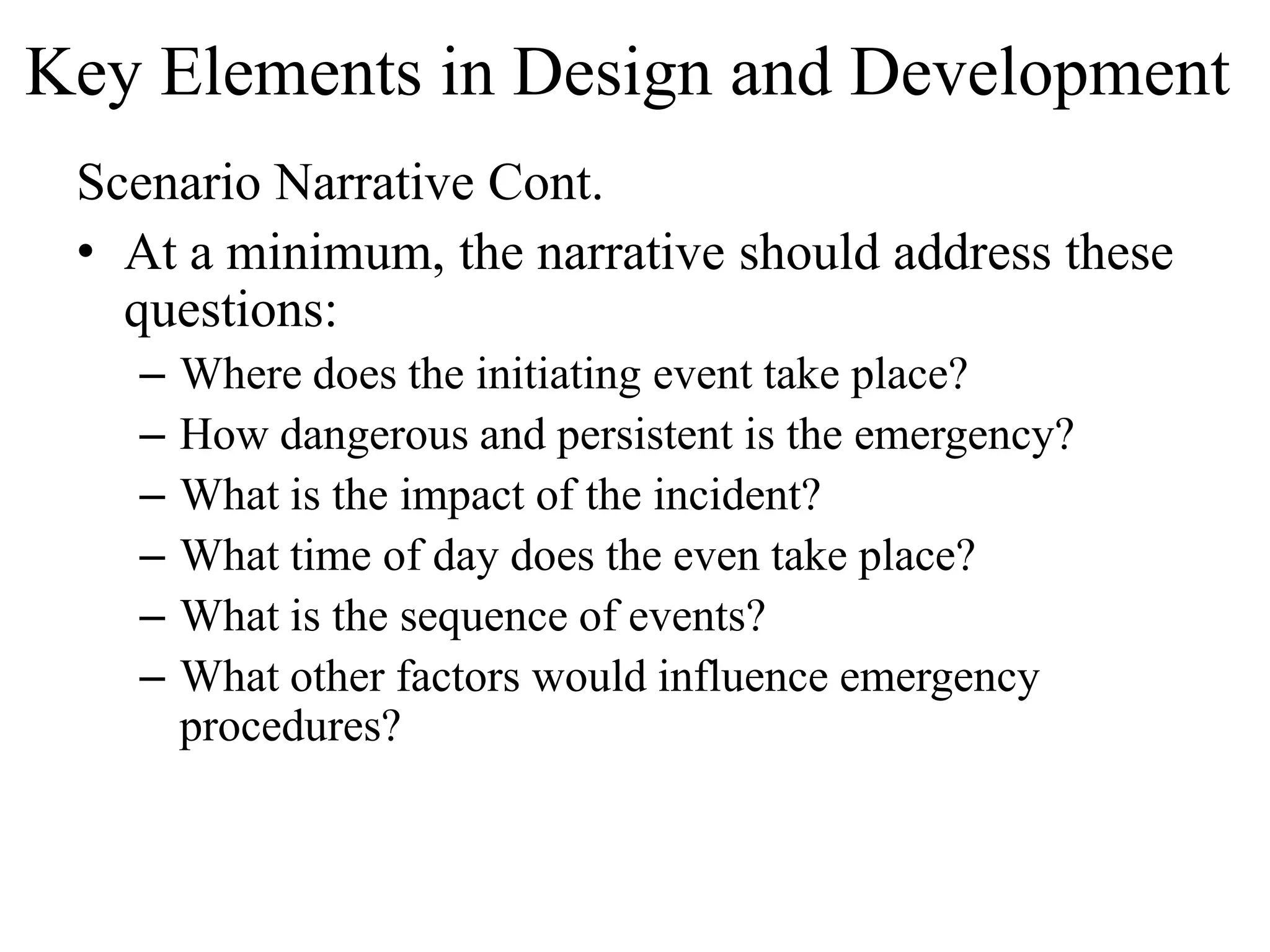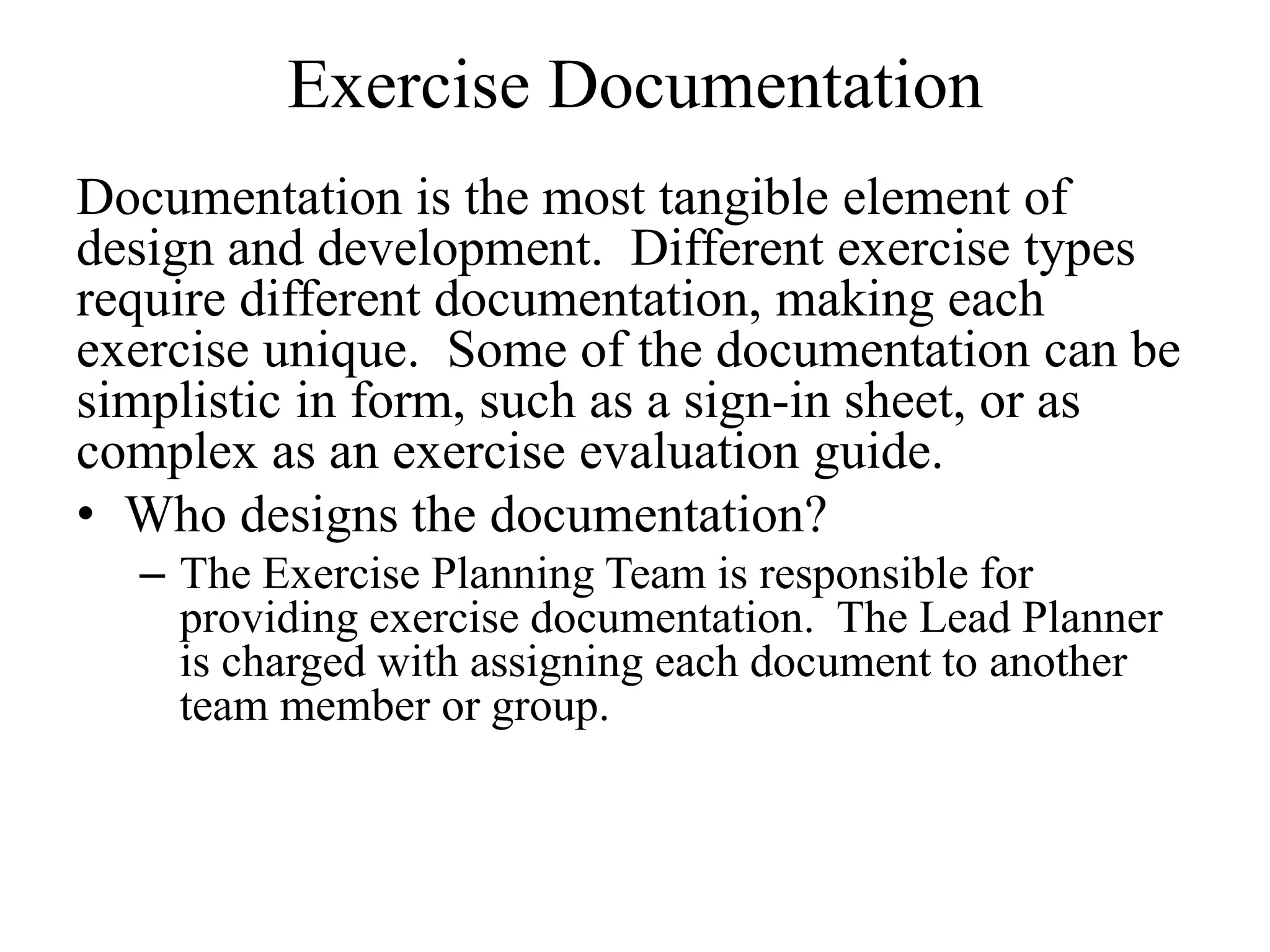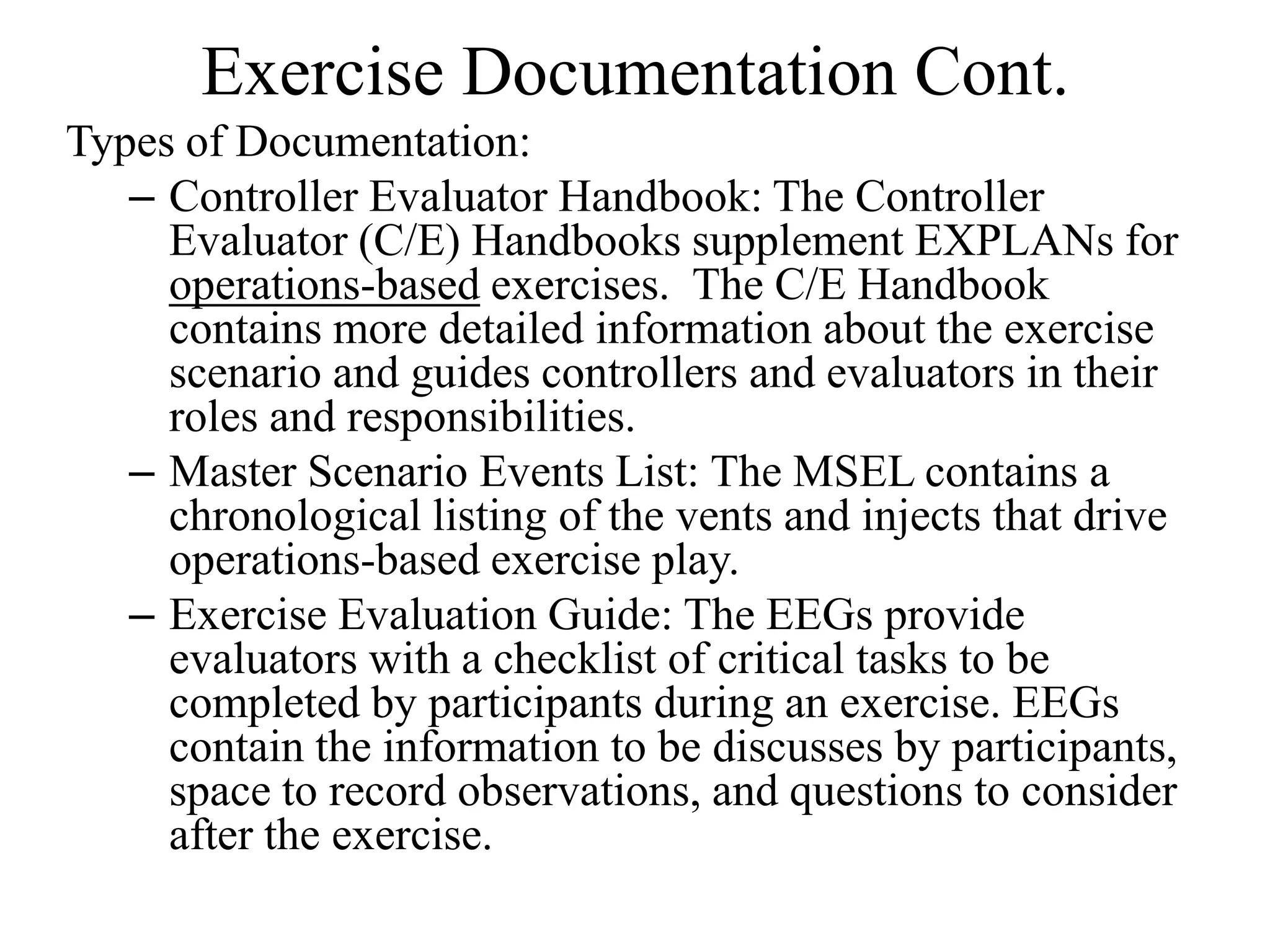This document discusses key elements in designing and developing an exercise, including assessing needs, defining scope and objectives, and creating scenarios. It emphasizes that the design establishes the framework while development constructs the exercise. When assessing needs, consider capabilities, hazards, and existing requirements. Scope defines participant types rather than numbers. Objectives and scenarios should be specific, measurable, achievable, realistic and task-oriented to achieve the purpose statement. Documentation includes situation manuals, exercise plans, controller handbooks and evaluation guides.
